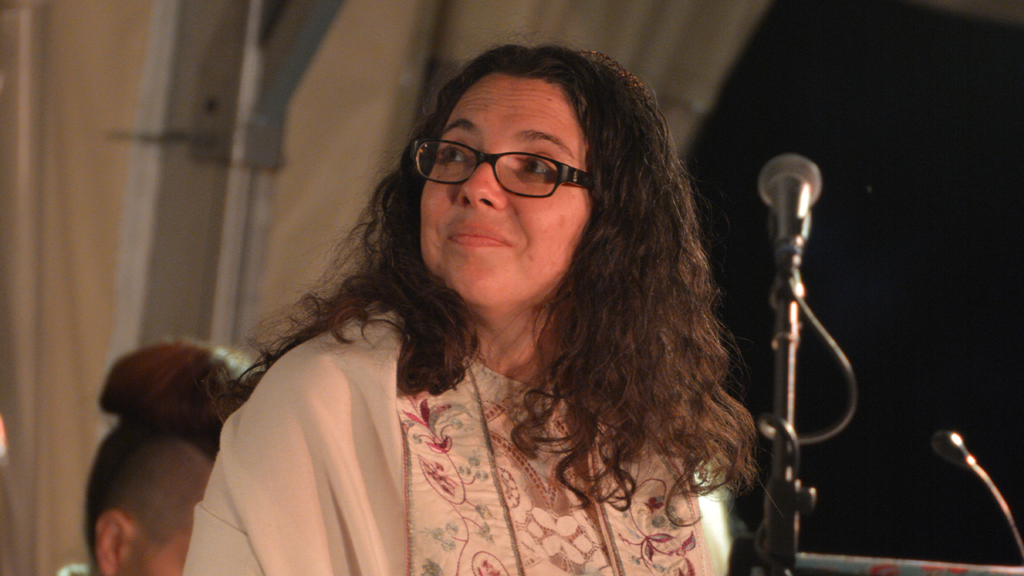By Rabbi Amanda Schwartz
As far back as I can remember, I’ve been a planner. In school, I would always map out when my assignments were due so that I could ensure I had time to adequately prepare. Even by the time I was in elementary school, I was planning my own birthday parties because the planning process gave me such joy. And back in the days when I traveled, I loved planning my trips down to nearly the last detail. Planning makes me feel calmer and happier.
This year, all of us will experience High Holidays like we’ve never experienced them before. I’ve put together some tips for ways to plan ahead, even a few minutes beforehand, for the High Holidays. I hope these will lead to not only calmer and happier High Holidays but also more sacred ones as well.
- Kevah/Fixed Practice. For those who have attended Judaism Your Way services in years past, you’ll recall that you are greeted before services begin and offered a machzor, a prayer book. Every summer, the Judaism Your Way rabbis spend hours creating a machzor specific to that year, featuring classic and new liturgy. Though we can’t greet you in person, please download this PDF onto your device or print it, so that we can all be “on the same page” during our services.
- Kadesh/The Sacred. The word “sacred” in Hebrew comes from the root, which means to “set aside.” We recommend that you prepare to enter the sacred nature of the High Holidays by blocking out time for yourself in your schedule. Just as we would say at the beginning of services in person, “please silence your cell phones” to remove the distraction or, better yet, set them aside completely in a different room.
- M’kdash M’at/Mini Sanctuary. According to Jewish wisdom, your home is essentially a “tiny Temple.” Are there ways that you could easily transform your home from the everyday to a place that feels more like a sanctuary? Perhaps add a tablecloth under your computer, set a vase of flowers nearby, or even orient yourself to face East, the direction many Jews face when praying. For Erev Rosh HaShanah and Kol Nidre services, you may want candles to light.
- Sing Your Heart Out. Feel free to sing as you follow along, as loudly as you like! It’s okay if you don’t know the words- you can always just sing a niggun, a wordless melody made up of your favorite syllable.
- Choreography. Just like when we gather in person, we’ll cue you when it is customary to stand during the prayers. Please do so as you are comfortable and able.
- Dress the Part. Though you could participate in High Holiday services in your pj’s this year, consider wearing what you might typically wear to our services at the Botanic Gardens. The clothes we wear can help us feel more prepared to open ourselves up to the sacred. For those of you who have a tallit, prayer shawl, or kippah at home, you are invited to wear them. If you don’t have these ritual objects, you could consider surrounding yourself in prayer with a shawl. There is a custom of wearing white on Yom Kippur- this is the perfect year to try on a new custom.
- Zerizut/Show Up on Time. In the past, our tent has been so full during the High Holidays that if you are not on-time, you might not get a seat. Even though you will be able to stream our services on demand later in the day, I encourage you to tune in to services when they begin. When we all begin the service at the same time, we are connected communally through sacred time.
- Ahavah Rabbah/Surround Yourself with Love. Though this year we won’t be together in person, we can still feel the love of our friends and family. Consider adorning your space with photos of loved ones or mementos that help you feel their love. Before or after the service begins, call, send text messages, or email the loved ones you would usually sit with at services.
- Culinary Judaism. When we gather in the tent, we end our services on Rosh HaShanah and Neila with a little nash, a light snack. Be prepared with apples and honey or other sweet foods to celebrate the New Year and food for a break fast after Yom Kippur ends.
- #Soulify. The period between Rosh HaShanah and Yom Kippur is known as the 10 Days of Teshuvah or, as Rabbi Marshall Meyer put it, “Ten days of searching, twisting, and turning’ of wrestling with our souls and trying desperately to find new meaning with our existence.” Sign up to participate in #soulify during registration and you will receive a daily dose of the sacred in your inbox to give you some guidance as you search, twist and turn.
Shana Tova – May this be a sweet new year full of learning!
Learn more about our High Holidays services and register today at www.judaismyourway.org/register.


